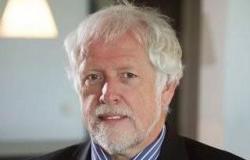24 apr 2024 om 00:01 Update: 1 uur geleden
The Netherlands can become climate neutral by 2050, even if our country retains a large aviation sector and a lot of industry. It is a “mega-complex change” that affects all parts of the economy. If we behave more sustainably, we make the puzzle easier, experts say.
“It is nice that we can give this message,” says Marko Hekkert, director of the Netherlands Environmental Assessment Agency (PBL). In front of him are more than twelve hundred pages of research, which together show how the Netherlands can become a country that does not release extra CO2 into the air.
The PBL wanted to calculate whether this is even possible before 2050, as prescribed by the climate law. And without major adjustments to our economy, so with a lot of aviation and shipping, without banning heavy industry and without a huge reduction in the livestock population. Conclusion: it is possible. “That was actually a surprise,” says Hekkert.
It does require enormous changes, which we all have to implement in just 25 years. We need to produce six to eight times as much CO2-free electricity, from wind, sun and nuclear energy. Install many more heat networks and heat pumps to heat buildings. Recycle much more plastic and melt it into new plastic. And more controversial options are also needed: large-scale production of biofuels and storage of CO2 under the North Sea.
“If you want to leave out one or two of those things, then it is simply no longer possible,” says Hekkert. His message: we no longer have time to argue about these techniques. “The time left is too short, you need the whole palette.”
Ontvang meldingen bij nieuws Stay informed with notifications
Lots of CO2 under the North Sea
By 2050, between 20 million and 50 million tons of CO2 per year will have to disappear from under the North Sea, the PBL thinks. For the most part, this is not CO2 from the combustion of fossil fuels, such as oil and gas, but from biomass.
CO2 can best be captured during the production of sustainable fuels. These are mainly made from residual flows from agriculture, or from crops such as elephant grass that are grown specifically for fuel production.
These flows grow again every year. By removing the CO2 and storing it permanently, we are in fact removing greenhouse gases from the air. This in turn compensates for the emissions of the cows that will still roam the Netherlands, and which will continue to contribute to the climate problem with their methane emissions.
Biomass for sustainable fuel
The Netherlands will probably not completely get rid of fossil fuels by 2050. These are mainly used in the production of plastic. Electricity largely comes from solar panels and wind turbines, sometimes via batteries that store the green energy.
Power stations are still there, but they are usually switched off. Some power stations even stand idle for years, because they are only needed during long, gray, windless periods. Due to the limited operating time, it makes no sense to use CO2 capture at these power stations, says the PBL.
This is very different in the production of biofuels, says PBL researcher Bert Daniëls. “That is the ideal location to apply CO2 capture. The CO2 is released there in a very pure form and these are installations that run continuously. That makes it relatively cheap.”
Because enormous amounts of sustainable fuels are needed for the large shipping and aviation sectors, tens of millions of tons of CO2 can be ‘harvested’ here every year. A large part of the greenhouse gas is stored, while some is processed into synthetic fuels based on hydrogen.
Behavioral change makes transition cheaper
If international aviation and shipping indeed continue to grow, the Netherlands will make things difficult for itself, say the PBL experts. If we flew less or let fewer cows out in the meadow, it would be easier to become climate neutral.
“If you fly much less, drive fewer kilometers, adjust your lifestyle, then the puzzle you have to solve becomes much simpler,” says Hekkert. We then have to make less expensive fuels, build fewer wind turbines and compensate for less remaining CO2 emissions.
The PBL chose not to include large-scale behavioral change in this study because, according to Hekkert, it is uncertain whether people are willing to do so. Which does not alter the fact that he thinks it is a good idea to make our behavior more sustainable: “That is always good, because it is also cheaper.”
Om een vraag te kunnen stellen dien je in te loggen. Log in of maak binnen 1 minuut jouw gratis account aan.
Direct inloggen
Gratis account aanmaken
Tags: Netherlands climate neutral surprise climate
-





